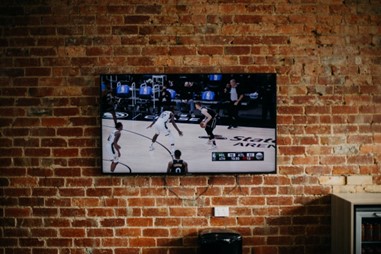
Wall mounts are a great way to display your TV if you don’t have a unit to rest the feet on or if you would rather have the TV positioned at a higher level. In this article we highlight what you need to know about wall mounts.
Are there different types of wall mounts?
There are three types of wall mounting brackets: fixed, tilting, and full motion. Fixed brackets purely fix the TV onto the wall and cannot be rotated or moved. Tilting brackets allow you to tilt the TV in different directions. Full motion brackets allows tilting and the bracket can also be extended outwards and inwards. Whilst all the brackets are great, the full motion brackets provide the most customisation for preference.
How can I tell which wall mount is best for my TV?
The user manual for your TV should include information regarding what wall mount you need and what measurement type you need to follow. A lot of manufacturers use VESA measurement standards for their mounting brackets. The VESA dimensions can be obtained by measuring the distance between the horizontal holes and vertical holes on the back of the TV.
However, not all TVs follow this standard so, if it doesn’t have VESA dimensions, you may need to try a universal mounting bracket. This hole pattern is not a standard so you would need to measure the distance between the screw holes and search for a wall mount accordingly.
When looking at wall mounts, you should also take note of the screen sizes they are compatible with. This will be listed on the packaging, but it is important to only choose ones that are designed for the size of your TV. This is because not only are they the right size for the width, but they are also made to support certain weights. If you use a mount that is too small for your TV, you risk the mount failing and not being able to hold your TV.
What else do I need to consider when mounting the TV?
When fixing a wall mount you should always consider the wall strength. For brick walls, you should ensure any mounts are screwed into the brickwork for a secure fitting, and avoid screwing into mortar. If you are fixing to a plasterboard wall you will need to use plasterboard fixings. You will find details on the screw type you need for wall mounting in both the TV manual and mount manual.
In terms of the installation, you should ensure cables are secure so they are not affected by the fixing on the wall mount. For example, if wires are organised and not tangled then you can prevent in potential pulling and breaking of cables.
For more information on wall mounting your TV, always refer to your user manual or contact the relevant support team to confirm this.
